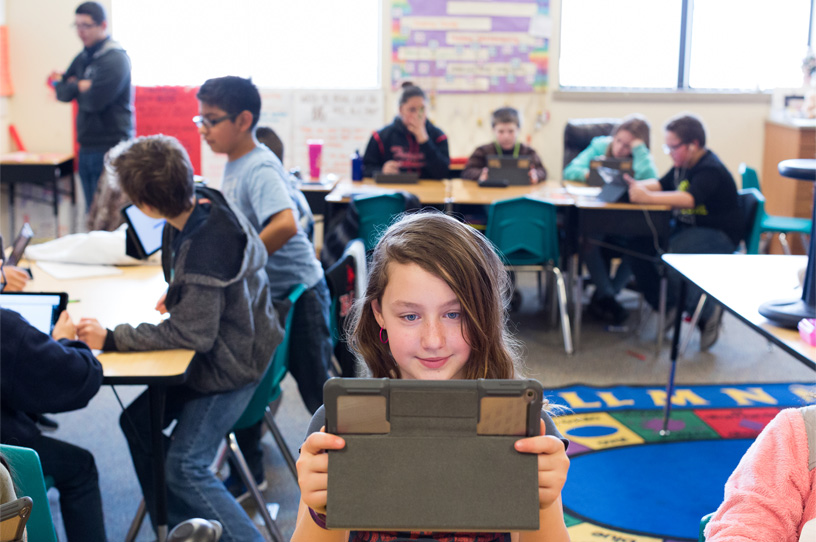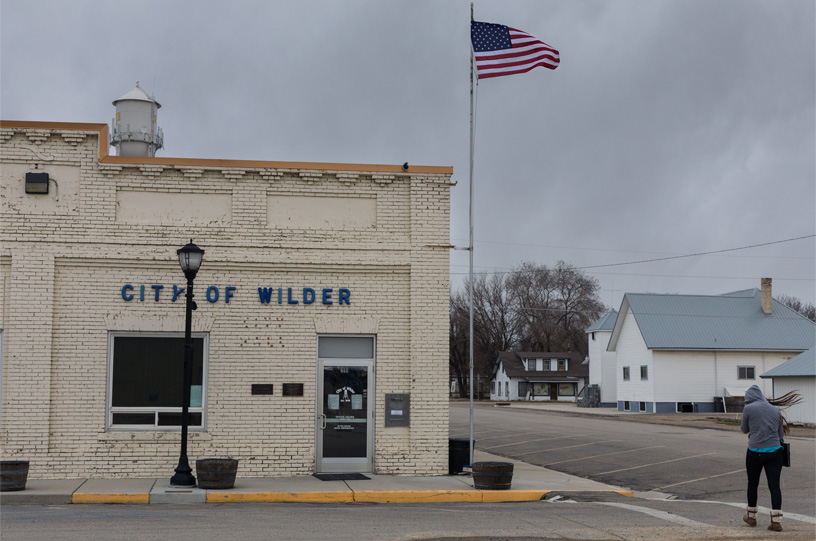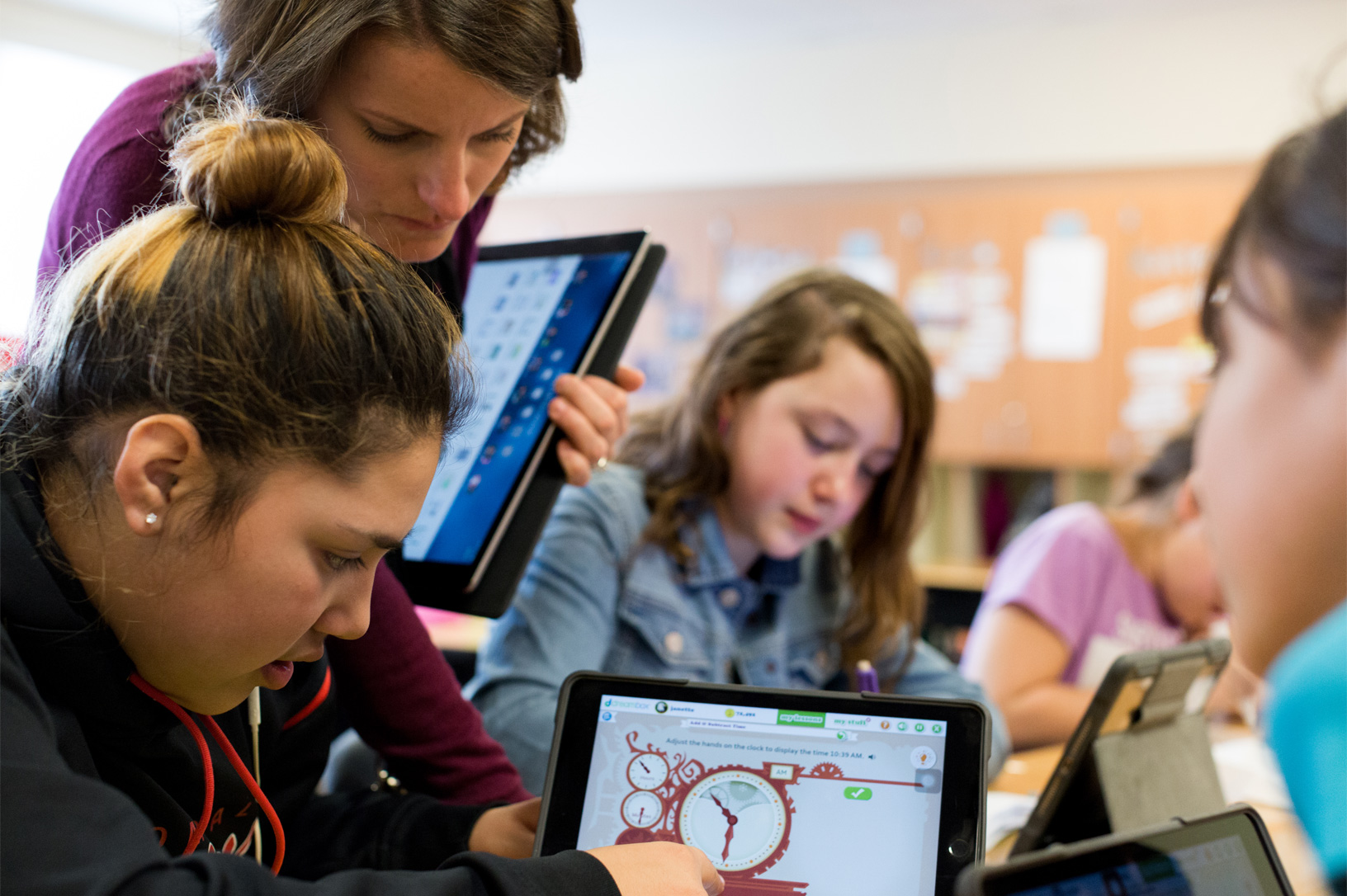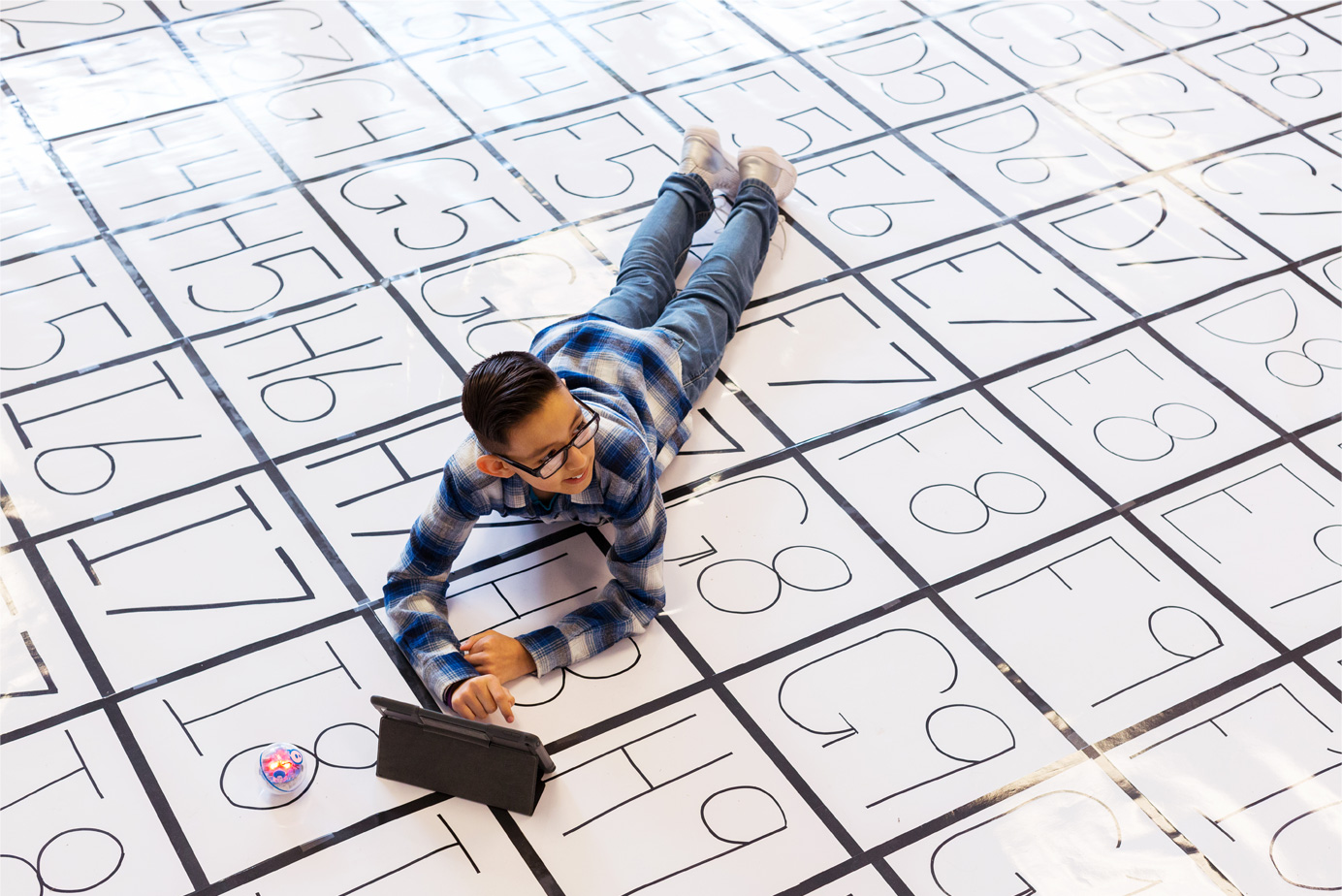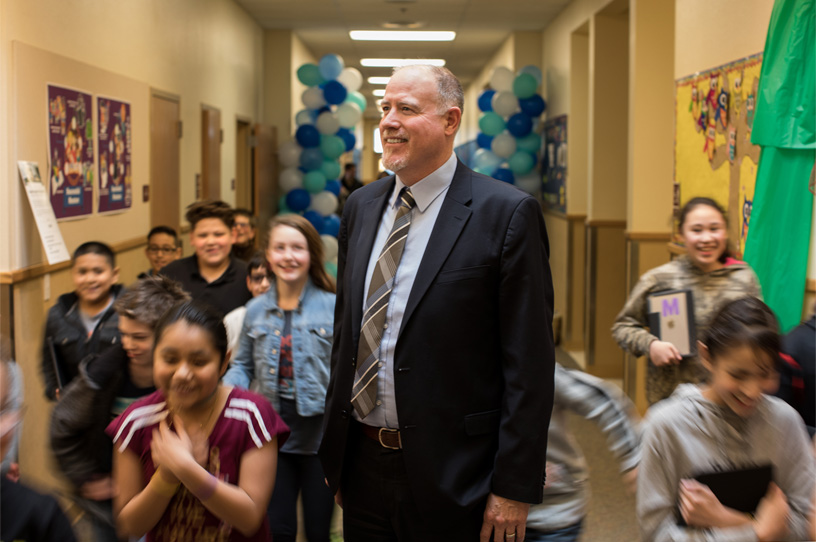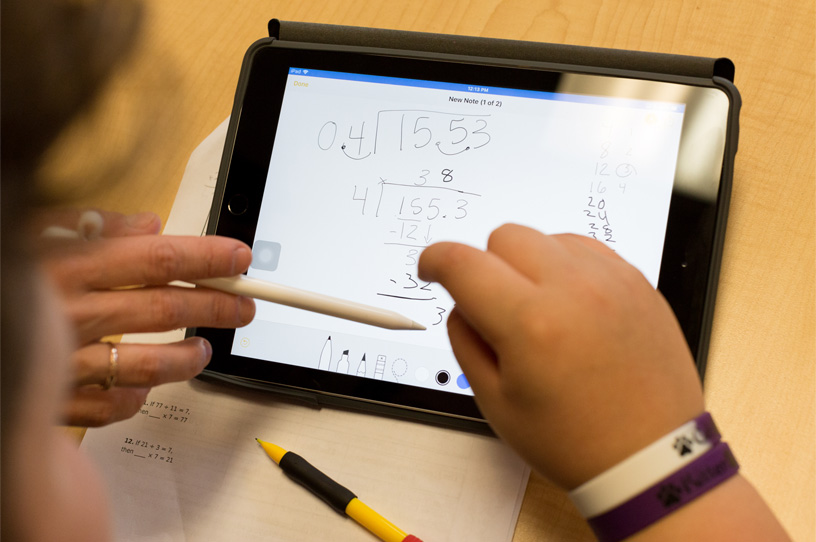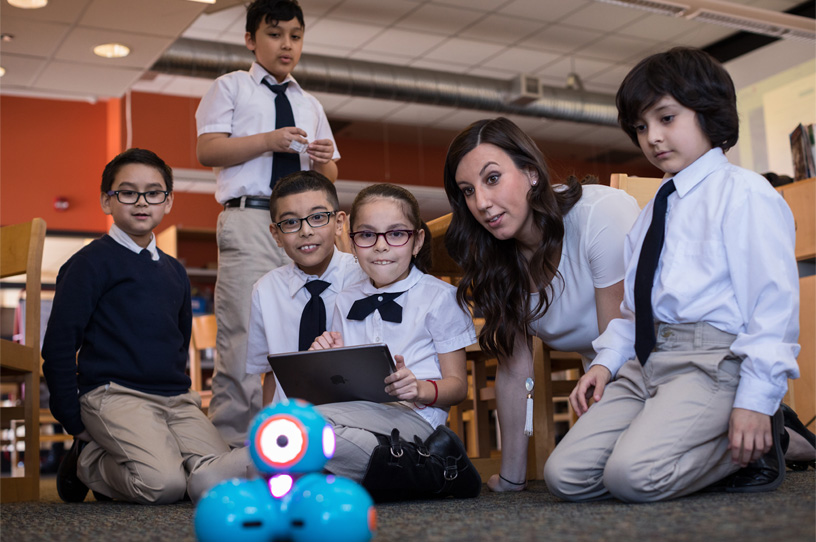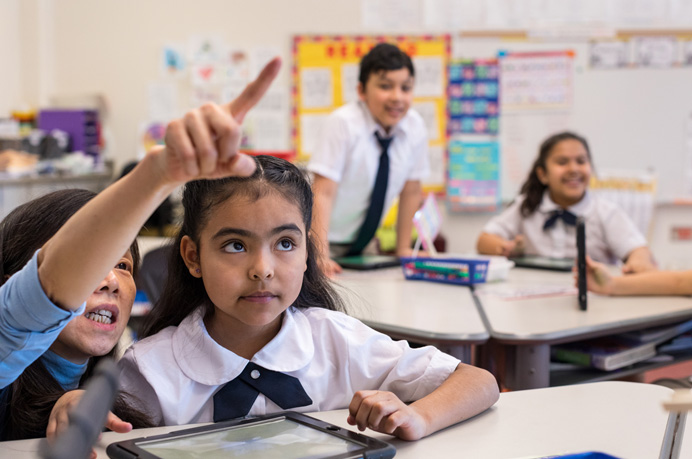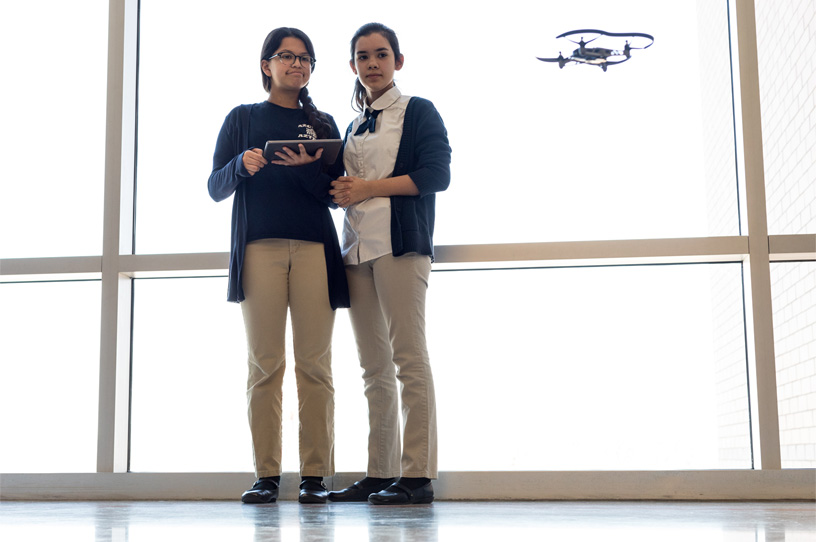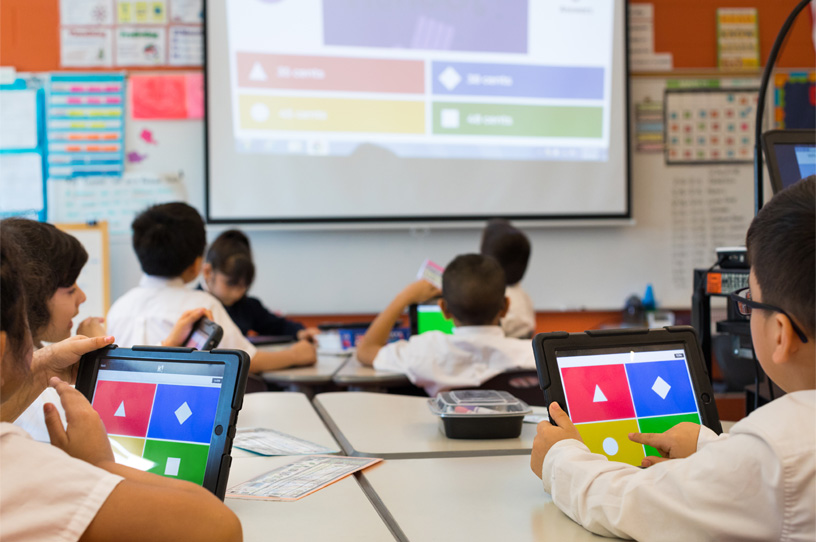FEATURE
March 27, 2018
Students succeed at their own speed with iPad and Mac
When you walk into Wilder Elementary School, just outside of Boise, Idaho, it’s what you don’t hear that sets it apart.
There aren’t any bells ringing between classes to tell kids when to move from room to room. There aren’t teachers standing at the blackboard, calling out one lesson to 30 or so students. In fact, there isn’t a lot of loud talking, or reprimanding, or noise anywhere.
But don’t let the quiet fool you — in those hushed classrooms, an educational revolution is taking place.
Wilder Elementary and its sister Middle/High School were two of the first 114 schools across the country selected to receive an Apple ConnectED grant. The programme, which was launched by the Obama Administration, is bringing millions of dollars in support and technology to underserved schools across America. In Wilder’s district, the median household income is just over $20,000 a year, and 100 percent of the students qualify for a free lunch. Less than half of the community’s households have an internet connection.
But things are different when kids get to school — every student has an iPad, every teacher has a MacBook and an iPad mini, and every classroom has an Apple TV and receives technical support. It’s just one of the programs that Apple funds to help teachers use technology to enable the students of today become the leaders of tomorrow.
At Wilder, it’s changing the way that educators reach their students, and turning the traditional model of what a classroom is supposed to look — and sound like — on its head. That’s because technology is allowing every student to learn at their own pace by choosing their own work and schedule. They don’t switch classrooms, they just switch the programme they’re studying on their iPad.
For fifth-grade teacher Stephanie Bauer, that also means she can give each one of her students the attention they need and deserve, regardless of whether they’re working at, above, or below grade level. She also credits the technology with allowing her to get to know her students better too.
“The personalised learning aspect is so important because these students are able to go on their own path and excel,” said Bauer. “Before, I would stand at the front of the classroom and say, ‘okay, I’m going to show you how to do something and we’re all going to do it together.’ And half the students didn’t know what they were doing, and the other half were bored.”
Now that students are able to work at their own pace on their individual iPads, Mrs. Bauer spends the day moving through the classroom, kneeling down beside each student and addressing their personal needs. For kids like Marco Araujo and Kahlilia Mark, who are both in Bauer’s fifth-grade class and working above grade level, it’s allowed them to be more creative.
Marco and a group of his classmates are using the Sphero app to learn how to code — they punch instructions into their iPads, which send their Sphero robots flying across a giant board on the floor in a game of Battleship. Kahlilia, who goes by Lilly, is a budding writer and uses the Book Creator app to write novels — she’s already penned four so far this year.
And for their classmates who are working below grade level, it means they don't have to be singled out and leave class every day to get additional help — Mrs. Bauer can deliver that kind of personalised attention at their desks, because they can work at their own speed on their own iPad. Mrs. Bauer says it’s had a huge positive impact on confidence and achievement.
Elementary School Principal Jeff Dillon wanted to move to this ‘mastery-based’ type of learning 10 years ago, but it wasn’t until the school received the ConnectED grant that he could put this type of personalised teaching into practice. And he sees and hears the results constantly.
“Every day in conversations with students, they’re telling me about their growth, their plan, their success, their next level,” said Dillon. “Whether they’re working at a fourth-grade or second-grade level while sitting in a third-grade class, they’re walking out with a smile on their face, and they want to come back and do it again tomorrow.”
It’s one of thousands of schools where Apple technology is helping teachers give their students more advanced, more creative, and more personalised ways to learn.
In Southwest Chicago’s Mariano Azuela Elementary School, teacher Kasia Derza has seen the power technology has to supercharge her STEM classes, and boost her students’ confidence at the same time. Last year, she taught a seventh-grade student named Carmen Mora-Nieto, who was incredibly shy and knew nothing about technology. She credits the Everyone Can Code curriculum with the radical change she’s seen in Carmen since then.
“It’s really made her come out of her shell,” said Derza. “Now, she’s a leader in my technology club. She’s leading a group of girls who are working to design an app for our school. I think that being part of a team, which is a big part of the curriculum, has really helped her with her confidence.”
At Kumagaya Special Needs School in Saitama, Japan, art teacher Takahiro Uchida is using iPads to help his students express themselves. He sets up a giant canvas on the floor and then his students use iPads to move robots dipped in paint across the surface. The result is a giant abstract work of art that everyone feels empowered to help create. He credits the technology with enabling these students to open up in ways he’s never seen before.
Back at Wilder Elementary in Idaho, the school day is coming to a close. Mrs. Bauer gets her students to tidy up and put their things away before they leave for the day. But there’s an extra step here that reminds you this isn’t a traditional classroom — the kids put their iPads on a cart to recharge. And then, as if breaking some kind of spell, a bell finally rings, and her students start to file quietly out the door.
Images of Wilder Elementary School
